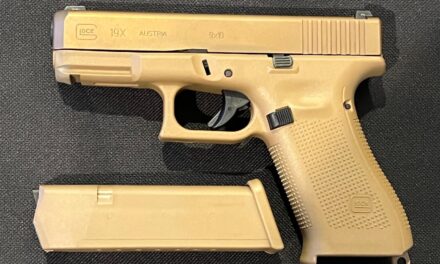We support our Publishers and Content Creators. You can view this story on their website by CLICKING HERE.
Key Points: China’s J-20 stealth fighter is a formidable yet enigmatic addition to the PLA Air Force. Designed to rival the U.S. F-22 and F-35, the J-20 boasts a stealthy exterior, dual WS-15 engines, and a ‘bomb-truck’ payload capacity of 27,988 pounds.
-However, critical questions remain about its advanced mission systems, sensor fidelity, and thermal management.
-While it can hit speeds of Mach 2.0, it lacks the agility of the F-22. Limited by its 1,200-mile combat range, the J-20 would require refueling to strike beyond Taiwan, constraining its maritime power projection.
-Despite these limitations, ongoing improvements may enhance its strategic relevance.
China’s J-20 Fighter: A Stealthy Threat to U.S. Air Superiority?
China’s 5th-gen J-20 stealth fighter aircraft can be understood paradoxically to a certain extent, as they are potentially highly threatening to US forces and mysterious at the same time. The exact scope of the threat the aircraft presents to US 5th-generation assets, Taiwanese air defenses, U.S. Naval assets in the Pacific, and ground areas from the Philippines to the South China Sea … may not be fully known or discernable.
Nonetheless, let us consider what we do know and can reasonably speculate about when compared against platforms like the F-22 and F-35 from the U.S. Air Force. Surely, the J-20 was designed to compete with and even fight in a regional war in Asia.
China’s J-20 Stealth Fighter: What We Know
Indeed, the external configuration looks stealthy and could arguably be considered 5th-gen, and Chinese government-backed newspapers such as the Global Times write regularly about the J-20’s attributes, such as its speed, bomb-carrying capacity, and domestically built WS-15 engine.
However, what is the true extent of its performance parameters and 5th-generation characteristics? The true measure of whether it can rival US F-35s and F-22 likely pertains to less easily discernible factors such as mission systems, sensor fidelity and resolution, computing and weapons range and fire control.
An interesting essay from Flight Global cites a Chinese firm discussing the J-20’s AESA radar and EOTS targeting technologies, systems also on the US F-35. However, the precision, image fidelity and range of the J-20’s EOTS may not be comparable to the F-35.
J-20 Fighter. Image Credit: Creative Commons.
For instance, the U.S. F-35 has shown in wargames that it can see groups of enemy fighters from stand-off ranges, which is undetectable, and destroy targets without being seen. Do J-20 sensors have a similar kind of overmatch? These kinds of questions would determine the jet’s true performance or superiority. The J-20 is listed as being capable of hitting Mach 2.0, speeds faster than a Mach 1.6 F-35 yet slower than an F-22, which can hit speeds of Mach 2.25.
The J-20 Bomb Truck?
This being said, there are some known elements of the J-20, such as its “bomb-truck” like capacity; it is more extensive and less agile than an F-22, to be sure, based on its size, configuration and published speed and thrust-to-weight ratio. It does have a large payload, as the J-20 can take off with 27,988 pounds of internal and external weaponry, whereas a full “beast-mode” F-35 can carry 18,000 pounds of ordnance.
This bomb-truck ability could factor heavily in areas where the PLA Air Force had air superiority, yet heavy weaponry would certainly make the aircraft less stealthy and agile.
On this point, the external dual-engine, blended wing-body fuselage of the J-20 with the double wings does look stealthy, yet its lack of maneuverability compared with an F-22 might make it more vulnerable.
It seems less clear that the stealth fighter has advanced thermal management technology and can suppress or diffuse its heat signature.
Other Fighter Jet Factors to Consider
The other impactful factor with the J-20 is simply the fact that it is land-launched and cannot take off and land at sea, something which is a limiting factor related to the Chinese ambition of projecting maritime air power beyond the Pacific. Of course the J-20 would have little trouble traveling the 100 miles to attack Taiwan taking off from mainland China, it would likely be challenged in terms of combat radius and dwell time if it had to operate forward throughout the Pacific in any combat engagement.
China’s emerging J-31 can launch from carriers, yet that only exists in the form of a few prototypes and it is unclear just how much a land-launched J-20 could truly threaten Japan or the Philippines.

Chinese J-20 Stealth Fighter. Image Credit: Chinese Internet.
Both Japan and the Philippines are just under 2000 miles away from the coast of mainland China, a distance out of reach for a J-20, which operates with a combat range of 1,200 miles. The J-20 can travel up to 3,400 miles with two external fuel tanks, making it much less stealthy and maneuverable over enemy territory.
Any attempted J-20 attack on the Philippines or Japan would need refueling, and it would not be clear that Chinese PLA aircraft would have any air superiority in this kind of attack.
One thing is clear: we will be hearing much more about the J-20 in the months and years to come, as Beijing seems committed to the fighter and its continual improvement, just like America’s F-22 and F-35.
About the Author: Kris Osborn
Kris Osborn is the President of Warrior Maven – Center for Military Modernization. Osborn previously served at the Pentagon as a Highly Qualified Expert with the Office of the Assistant Secretary of the Army—Acquisition, Logistics & Technology. Osborn has also worked as an anchor and on-air military specialist at national TV networks. He has appeared as a guest military expert on Fox News, MSNBC, The Military Channel, and The History Channel.

 Conservative
Conservative  Search
Search Trending
Trending Current News
Current News 





